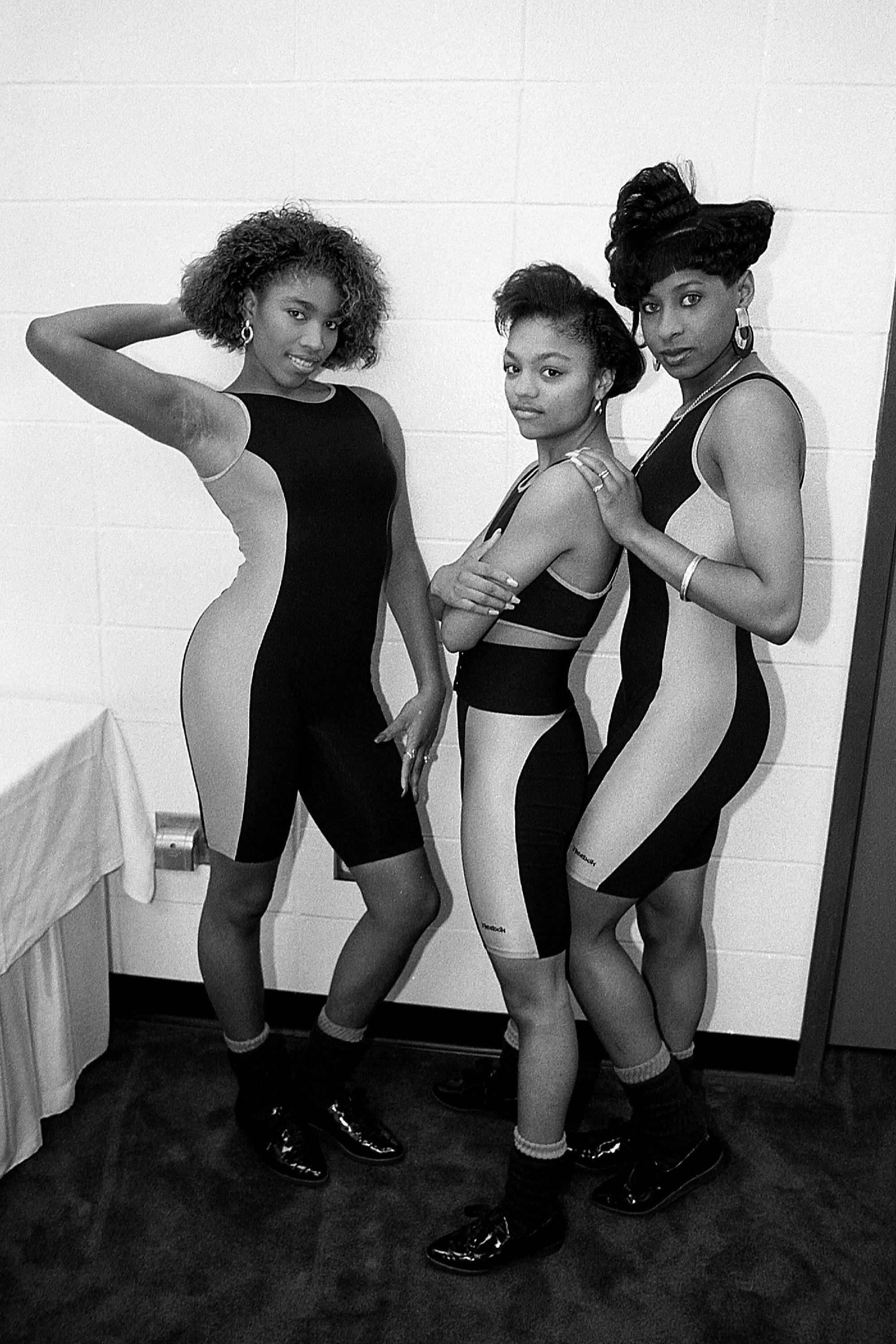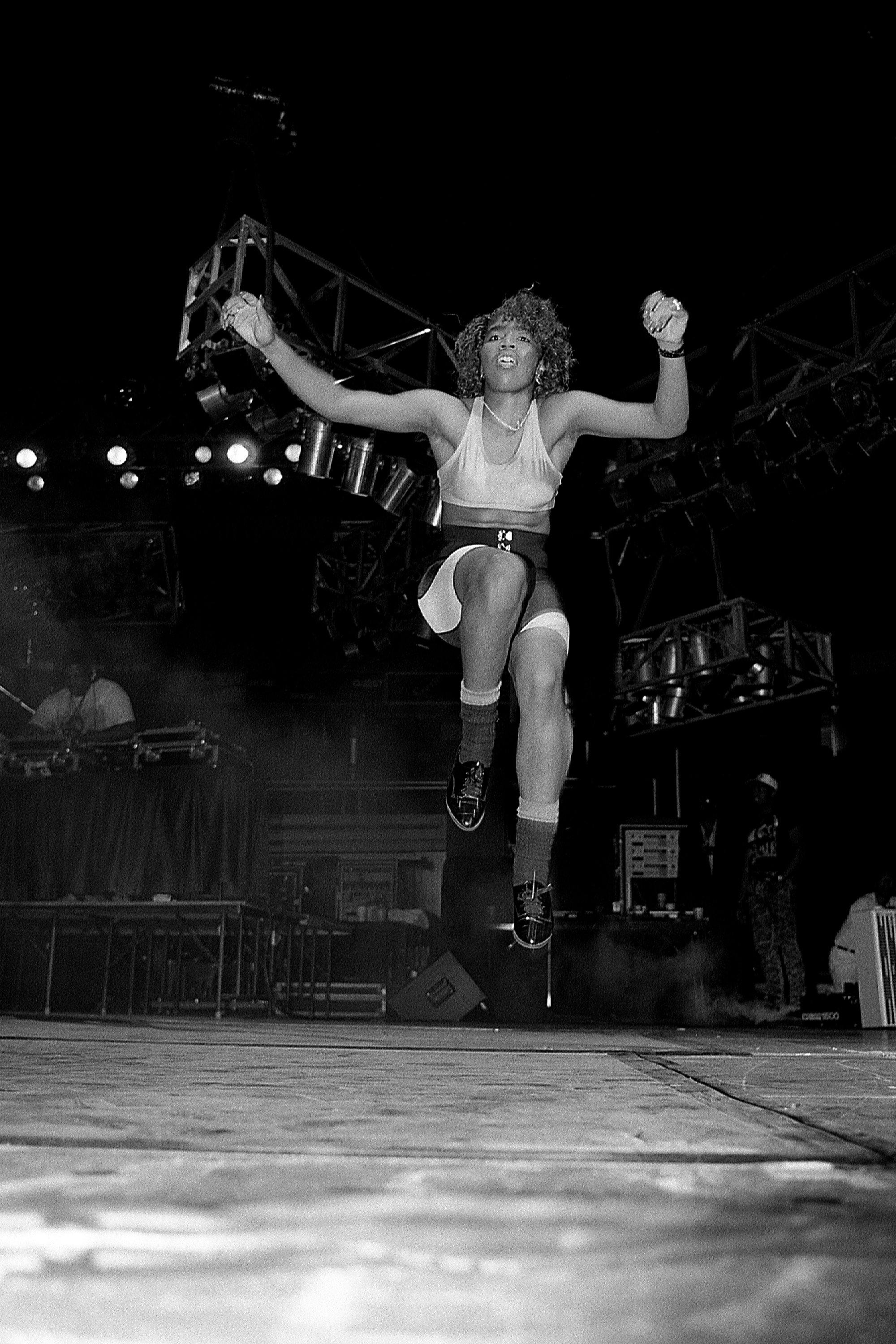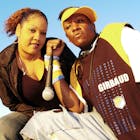
Juicy Gotcha Krazy: The Sex Appeal of Oaktown's 357
Juicy Gotcha Krazy: The Sex Appeal of Oaktown's 357
Published Fri, November 6, 2020 at 10:31 PM EST
In 1987, an Oakland-based aspiring rapper who went by the name of M.C. Hammer decided he was going to push his career into high gear.
The rapper (born Stanley Burrell) was a fleet-footed performer with a knack for self-promotion. He'd recorded some independent singles and was making noise around the Bay Area Hip-Hop scene; but he knew he'd have to grind harder if he wanted to take things to the next level. He'd founded his own record label, Bust-It Records, in 1987; and Hammer recruited a crew of aspiring DJs, hypemen and dancers, with the idea being that, in order to make that leap, he needed the best stage show around.
And he soon found a formidable trio of dancers: Suhayla Sabir, Tabatha Zee King-Brooks, and Phyllis Charles. He'd had them audition for a video and soon brought them on as his full-time dancers. He would rechristen them all: Suhayla became "Sweet L.D.," Tabatha was "Terrible T," and Phyllis was dubbed "Lil P." Hammer was already known for his flashy moves, and these women could keep up.
"I didn't have any training and I got most of my experience in the club, Silk's in Emeryville," Sweet L.D. shared in 2015. "That's where I met Hammer."
"He met me at an army base club in Oakland," Lil P recalled in an interview with Underground Girls Of Hip-Hop. "He heard me playing around on the mic one night doing the Salt-N-Pepa song 'Tramp.'"
Tabatha joined them after P and L.D. were established within Hammer's entourage. The two girls had become close friends, and "Terrible T" was the newcomer. "We clicked easily when we met....we got along like sisters," L.D. said. "When Tab came in, there was a little bit of getting used to, chemistry-wise. We had a new girl."
Hammer dubbed the group "Oaktown's 3.5.7." as both a salute to their homebase and to emphasize the power of the trio as dancers (comparing the girls to a 357 Magnum).
"He taught us positioning. He taught us how to think of a song -- to choreograph a song. Not just out there dancing, but how to listen to it, all of those elements, changes in the music, how to accent that. There were things that he brought to dancing for us. The rehearsals were intense. Non-stop. You could be in there six to ten hours, maybe twelve hours, and you have not eaten. People are coming from work or school or whatever they did and trying to hang. [The rehearsals] were grueling. There was no sidestepping."
L.D. would later call it a heavy-handed introduction to the intensity of the music business. "We kept in each other in check," she says. "We tried to have as much fun as we could, given the circumstances."
DROP YOUR EMAIL
TO STAY IN THE KNOW
Hammer would collaborate with the girls on routines for his shows, and the fact that they'd all had a background in club dancing proved to be a benefit: they could handle the intensity of Hammer's choreography and understood the energy he was trying to communicate in his shows. Along with Hammer's cousin, Ace Juice, they would gain notice as high-powered backing dancers. And MC Hammer was becoming a force. In 1987, he released his debut album; after subsequently landing a deal with Capitol, the project was re-released as his major label debut, Let's Get It Started. The album was a platinum-seller, and suddenly Hammer and his roster of artists were hot commodities.
Hammer's sexy female dancers were heavily featured in popular videos for singles like "Turn This Mutha Out" and "Let's Get It Started." With acts like Salt-N-Pepa and JJ Fad taking the charts by storm, and with Capitol primed for more Bust-It material, the next move seemed obvious to everyone.
"Hammer had an idea to produce a female rap group and we got that opportunity," Sweet L.D. recalled in an interview. "So we became Oaktown's 3.5.7."
"I had some experience writing poetry and it helped me write. He says that he wrote all of it, but Hammer did not. We all co-wrote with him. Because it's a man writing for women. You can't really do it from a woman's perspective. He didn't do it all."


The group immediately set about recording their debut album. Wild And Loose was released in early 1989, and the single "Yeah, Yeah, Yeah" announced the arrival of Oaktown's 3.5.7. The album would eventually peak at #126 on the Billboard 200 and #23 on Billboard's R&B Albums chart, but it was initially moving slowly. With their album out, the ladies hit the road with Hammer as both backing dancers and opening act.
But the members of Oaktown's 3.5.7. were starting to cast a scrutinizing eye at their mentor's demands. And they were noticing a lack of checks. Even as Hammer's star had risen, Oaktown's 3.5.7. wasn't making the kind of money professional dancers were typically making. Hammer's recruitment of the girls had been informal, but now they were a major act.
"We were not getting paid for rehearsals, we were not getting paid for local...Bay Area shows," L.D. explained to Dusty Vision TV last year. "So when we get on The Arsenio Hall Show, we didn't understand that...when you're a hired artist, you're paid for your time being on that show. Hammer said 'we've got The Arsenio Hall Show scheduled, these are the songs we're doing.' We [were just like] 'OK.'"
The girls were confused when they were handed paychecks for their TV appearance. It was when they got paid for the Arsenio gig that L.D. and Lil P realized they should've been getting paid for all of the work they'd done. Once P realized they should've been paid but weren't — despite the demanding schedule— she made it known that she wasn't happy.

I had some experience writing poetry and it helped me write. He says that he wrote all of it, but Hammer did not. We all co-wrote with him. Because it's a man writing for women. You can't really do it from a woman's perspective. He didn't do it all."
- Sweet L.D. of Oaktown's 357
Lil P was getting weary of Hammer's iron grip on the group; she'd been frustrated with Hammer's approach and the lack of money the group was seeing. Hammer kept a tight hold on Oaktown's 3.5.7. and P had enough. By mid-1989, Lil P was no longer in Oaktown's 3.5.7. When the video for "Yeah, Yeah, Yeah" was released, she wasn't in it. Two new members, Sweet P and VC, were suddenly added to the group. But both were out shortly thereafter; and Oaktown's 3.5.7. would soldier on as a duo.
"I decided to stay," L.D. said. "Me and Terrible T, we kept thinking, the longer we stay, the harder we work, the better we'll surpass whatever obstacle they put in our way. [We thought] whatever we did, we would finally earn their respect and be treated differently. That was not the case."
Nonetheless, Terrible T and L.D. continued promoting Wild And Loose. And along with Hammer and other stars, they appeared on "We're All In the Same Gang" with the West Coast All-Stars, an anti-violence message track that featured popular West Coast Hip-Hop artists. And the next single from Oaktown's 3.5.7. would be their biggest. "Juicy Gotcha Krazy" was an infectious track on the album, that got a glossy remix treatment that included an undeniable hook from Bust-It songstress B Angie B. Released in early 1990, "Juicy Gotcha Krazy" became a bonafide hit on R&B radio, getting play alongside poppier rap tracks, dance cuts and new jack swing hits, and hit No. 7 on the Rap Charts.
Their early singles put them on Hip-Hop fans' radio, but nothing had been like this. "Juicy Gotcha Krazy" made Oaktown's 3.5.7. the hot, new female act in Hip-Hop. The brazen lyrics and the ladies' talent as dancers put sexuality in your face; they became famous for their spandex outfits and unapologetic nature. They flaunted their sex appeal in a way that set them apart from so many of their peers. They weren't being cute or coy, this was in-your-face — even if it wasn't as explicit as the N.W.A.-esque gangstas or bass artists like 2 Live Crew. When Oaktown's 3.5.7. rapped about their "juicy," they made you believe every word.
The video became a popular fixture on MTV and BET, as Oaktown's 3.5.7. suddenly became the breakout stars of Bust-It Records. Wild And Loose was now selling steadily, and the label could now push the other artists on its roster. Albums from Bust-It's R&B acts Special Generation and B Angie B would see release in 1990 and 1991, as Hammer became one of the biggest touring artists in music.
His 1990 album Please Hammer Don't Hurt 'Em turned MC Hammer into a multiplatinum superstar. His stage show ballooned to an infamously massive scale: there were sometimes as many as 30 people onstage at a time. Oaktown's 3.5.7. was seeing their biggest success just as Hammer had become one of the most famous people in the world.
But even as Bust-It was seemingly riding high, Oaktown's 3.5.7. wanted to be out from under MC Hammer's thumb. "There was a lotta negativity," L.D. said in 2015. "There was a lot of competition within the organization. We were feeling it."
Sweet L.D. and Terrible T pushed to take more creative control, over the group's videos, and over the music. Capitol released the duo's second album, Fully Loaded, under the Bust-It imprint, in 1991. But the ladies were estranged from Hammer and his affiliates. They'd completed the album with outside producers, and went on tour without the Bust-It brand.
"A lot of times in the past we toured with Hammer," Sweet L.D. said in a 1991 interview with RJ Watkins. "But now that we're not under his wing...we're touring with other artists."
Breaking free of Hammer and the strained relationship with Bust-It led to questions regarding the group's standing with their former labelmates like B. Angie B. The singer had finally released her solo project in 1991, but the success of "Juicy..." led to casual fans assuming B. Angie B. was a member of Oaktown's 3.5.7., not just a featured artist on a hit single. The confusion led to frustration for the group.
"I don't know if we'll be touring with Angie. We still hang out and stuff," L.D. mentioned to Watkins. T felt obligated to clarify things.
"Angie was never in 3.5.7.," T said directly. "She just did that song 'Juicy' with us. And I don't know if people think she was a third member. But she was always a solo artist."
Fully Loaded didn't have the success that Wild And Loose had seen, but the album featured T and L.D. pushing further into provocative territory. They'd had more say in their image this time, and they distanced themselves from their earlier spandex-and-Hammer-pants image with more risqué, high fashion wear. The highly erotic video for "Honey" featured a BDSM theme and the ladies rapping about "the taste of my honey." Along with the single "Turn It Up," the album featured more hard dance-driven production, primed for club play.
But the project wasn't promoted with the same gusto as previous Bust-It releases by Capitol. Sweet L.D. and Terrible T battled with the label and their management over creative and promotional decisions that ultimately led to Oaktown's 3.5.7. being dropped from the label in 1992. After that, everyone would go their separate ways. Sweet L.D. forged ahead as a dance instructor in Texas, and started a family; as did Lil P and Terrible T.
"I didn't speak to anyone [from the group] until I found L.D. on Facebook," Lil P said in 2015.
The friends reconnected online and performed some dates as Oaktown's 3.5.7. and L.D. and Lil P launched "Workout 3.5.7." to promote fitness. At a time when sexuality in Hip-Hop feels more discussed and nuanced than ever, as women like Cardi B and Megan Thee Stallion drop hits like "W.A.P.," it's important to recognize the legacy of Oaktown's 357. Theirs was a brand of sexuality that could be both round-the-way and hyper-stylized; they flaunted eroticism at a time when it wasn't exactly embraced by many rappers. When so many women in Hip-Hop were either downplaying sexuality to rise above chauvinistic double standards; or playing up their sexuality for shock value; these sirens from the Bay Area were something else.
As sex-positive women in Hip-Hop have become recognized, the group's legacy has become more celebrated. Their story is an important one, and L.D. has advocated for young women in Hip-Hop to have control over their careers.
"They have to be comfortable with themselves," L.D. told Underground Girls Of Hip-Hop. "As an artist, as a person who can think independently and make decisions. If they're not, it will be easy for them to be vulnerable, manipulated, and [be] taken advantage of."
"Know what your goals are, know what your dream is, and protect it."






